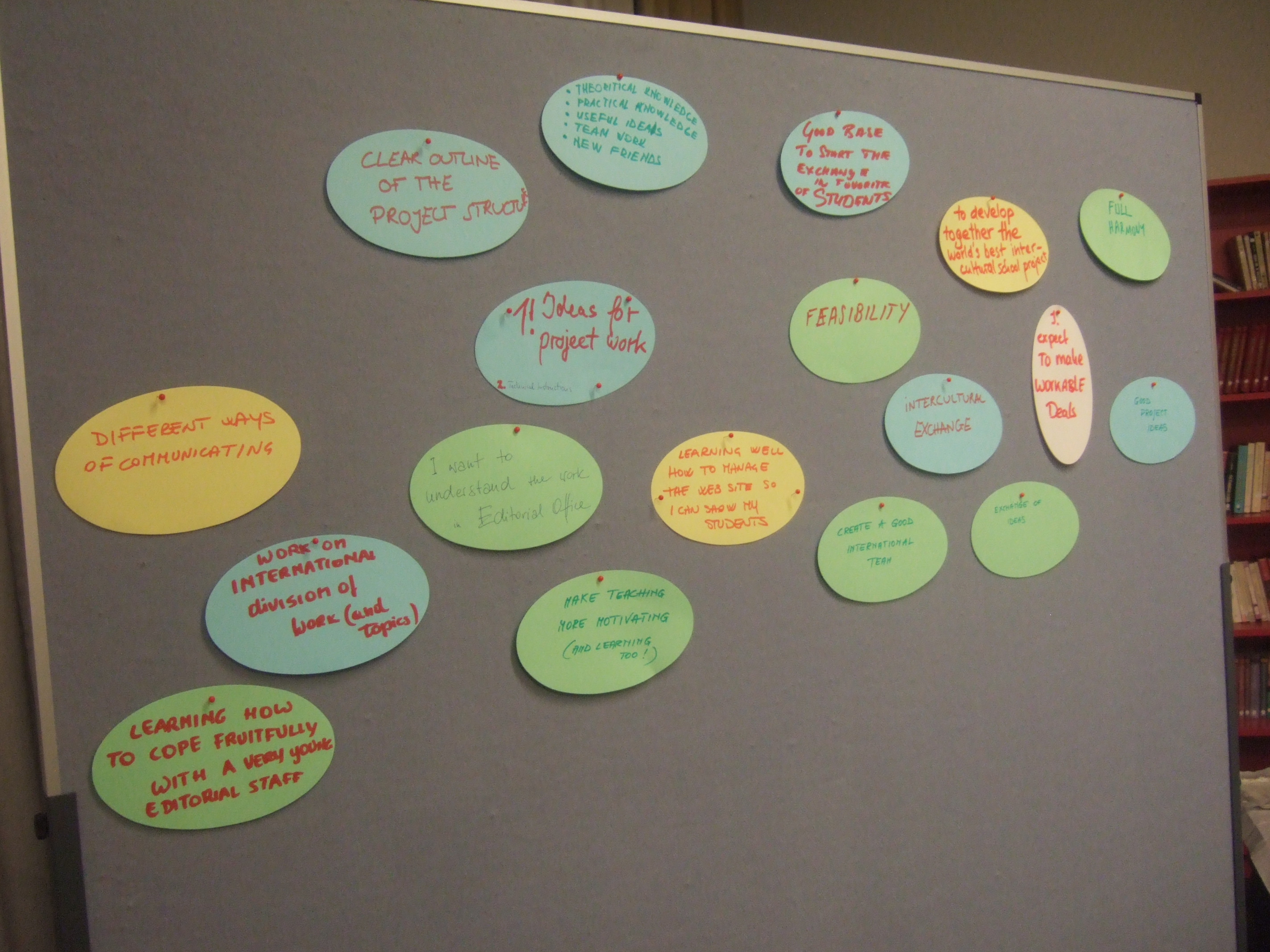Übersicht des Interkulturellen
Youth Politics. A Panel Discussion
The trait d’union file storage
The trait d’union profile in five languages
trait d’union - Idee, Konzeption und Projektstruktur
Projekte: Idee und Konzept; Evaluation, Analyse und Nachhaltigkeit
About Commenting. An Outline of a trait d’union Tutorial
Use “trait d’union” for your educational purposes!
Flucht & Heimat
trait d’union: on two pages / auf zwei Seiten
Wie AfD und Pegida ticken: Musterprojektion statt Mustererkennung
Angekommen – aufgenommen? Zur schulischen Integration von Migrantenkindern
Interkulturelle Integration als Bildungsaufgabe
Wirtschaftskultur bzw. Interkulturalität im Bereich der Ökonomie
Intercultural competence learning: from “trait d’union” through to the Intercultural Driving Licence
What you see is what you are prepared to see.
Intercultipedia: Wiki for Gathering Descriptors of Intercultural Competence (Draft)
Intercultural Competence and its Certification
Die Polyvalenz des „trait d’union“-Projekts als Basis seiner Multikompatibilität und Nachhaltigkeit
Interkulturelles Lernen in Schule und Unterricht
“trait d’union” offers facilities for intercultural communication and its learning.
“Trait d’union – Bindestrich zwischen den Kulturen”, präsentiert in der Zeitschrift BEGEGNUNG (2012)
“trait d’union” - a learning and action platform for intercultural involvement
Migration and Integration
Die internationalen Treffen der “trait d’union”-Redakteure: Schüleraustausch als Projektarbeit
Plädoyer für ein Internationales Zentrum für InterKulturelles Lernen in Colomiers (2002)
“trait d’union” präsentiert zweisprachig den deutschen Schriftsteller Matthias Politycki (2001)
Die “trait d’union” Webseite, ein multimediales Forum des interkulturellen Lernens und Austauschs
Die “trait d’union” Ausgaben von n° 1/2001 bis n° 10/2019
Programmatische Texte über die internationale Schülerzeitung “trait d’union” (2001-2012)
Europäische Projekte zum interkulturellen Lernen (seit 2000)
Dove est Faustina? Ein trilinguales Schüleraustausch-Projekt in Rom (1999)
Interkulturelles Lernen im Schüleraustausch (1997)
Vorschläge zur Didaktik, Methodik und Organisation einer Auslands-Studienfahrt (1992)
Interkultur
Use “trait d’union” for your educational purposes!
An Invitation to Pedagogues in Schools and Other Educational Institutions
Munich, 19 October 2017
Published on traitdunion.online by the project manager
The Intercultural Youth Magazine trait d’union (hyphen) is an international learning project, based on the communication and cooperation of young people – and pedagogues – from different cultures and countries. It is on the one hand a forum where the young can exchange their views on topics of common interest. On the other hand, it offers a lot of opportunities for educational, especially teaching, purposes. We want to invite you, the pedagogues all over the world, to use these opportunities by joining this project.
Since its beginning, 27 schools from 14 countries and 5 continents have contributed in 30 languages. Being currently in a phase of reconstruction, we restarted with two educational institutions, a secondary school from India: the Gurugram Public School of Gurgaon, near New Delhi, and one from Germany: the Gisela-Gymnasium München (Munich).
As to the number and scope of the contributions, there are no minimum requirements. The flexible project structure allows to suit trait d’union smoothly to the interests and possibilities of the participating institutions and persons.
The common work of the international team is designed to prepare an issue with a broadly conceived topic in which the interests of the young and the teaching contents of as many different disciplines as possible overlap, like e.g. “We Are All Strangers”, “Boys & Girls” or “Courage”.
The next issue, provided to come out in the course of 2019, shall be “Integration or Separation: How Do We Want to Live?” ranging from the individual field of experience (like isolation inside the class) to the social (like migration, its reasons and consequences) and political areas (e.g. Brexit or President Trump’s plan to build a wall between the USA and Mexico).
The editors’ activities are not restricted to printable media (texts, drawings, photos), but reach to contributions that can be recorded through audio and video. trait d’union Radio and trait d’union TV serve to document these activities. Let us not forget the Discussion section.
The main objective of all acts of communication and cooperation within the trait d’union project is to encourage and to support intercultural competence, being one of the social and vocational key qualifications in the age of globalization. A particular role is attributed to the possibility to make comments on the contributions of the colleagues on the commentary function. This can fulfill various functions: asking, adding own experiences, comparisons, approval and criticism, and planning extensions of the contribution. Important is openness and mutual respect.
The use of trait d`union as a project complement in the classroom can enhance the following elements according to the desired ‘dosage’:
Strengthening of the daily life context (”... sed vitae”) through thematic intersections with current events and interests of young people
Motivation support through action and product orientation
Interdisciplinary learning
Orientation to the individual interests and abilities of the students through the division of labor within the overall context of the project, by choosing between different …
basic orientations: the journalistic or the creative one
media: texts, drawings, photos, audios, videos
genera: e.g. reports, interviews, comments / stories, dialogues, poems
Acquisition of special competencies within the workspace of the project (values, capacity for teamwork, organization, technics, media)
Communication and cooperation with young people (and possibly adults = teachers) from other cultures for common products (newspaper)
Use of trait d`union contributions from foreign partners in the classroom (authenticity, daily news) with the possibility of subsequent feedback to the author (inquiries, exchange of experience and opinions)
Change of perspective
Increase of intercultural competence
If you are interested in participating, please contact us: .(JavaScript must be enabled to view this email address)
Welcome to trait d’union!

